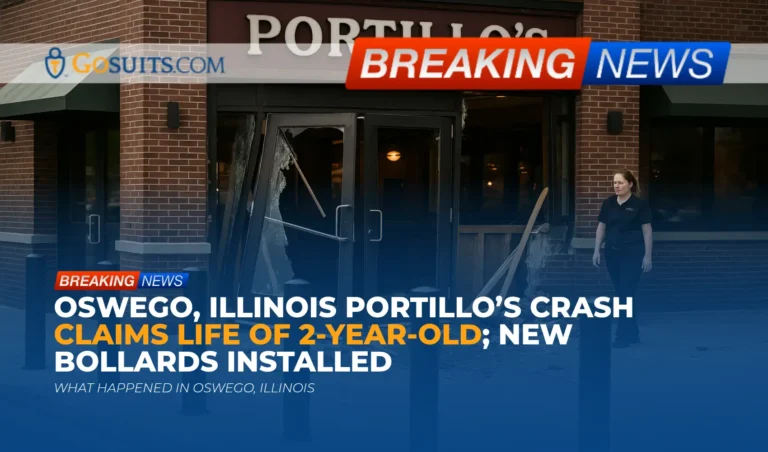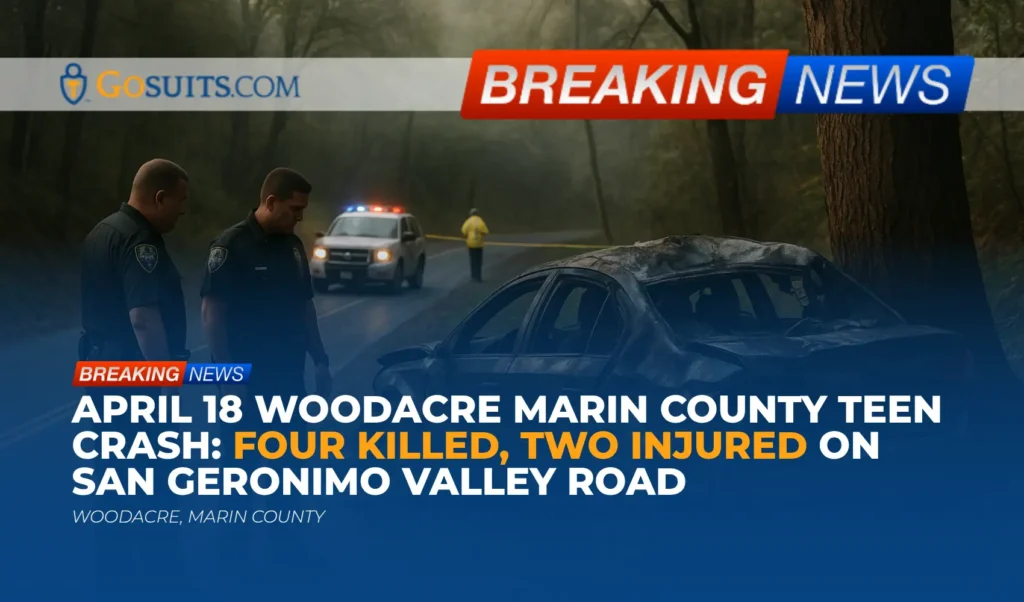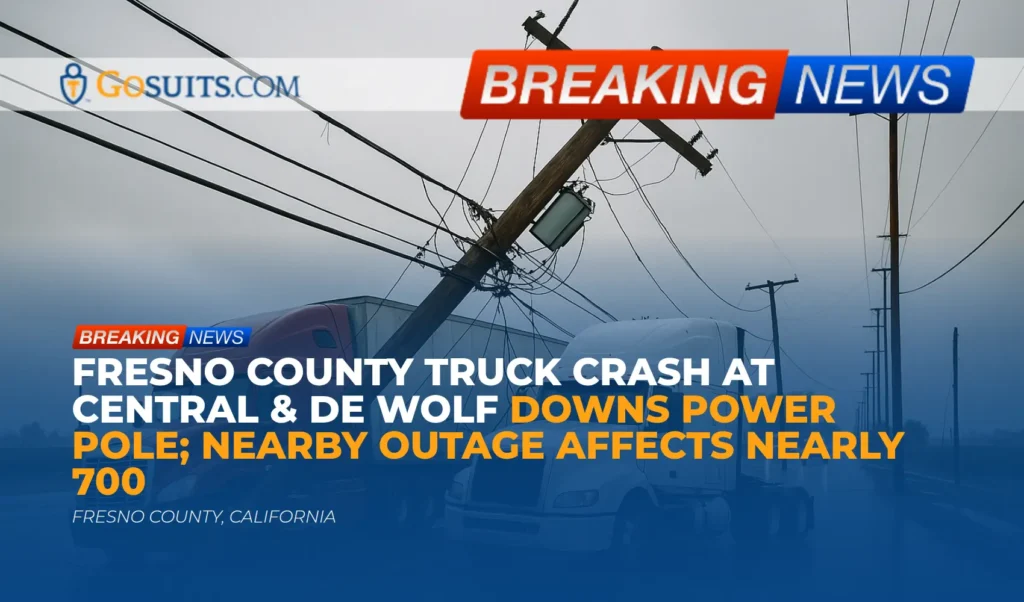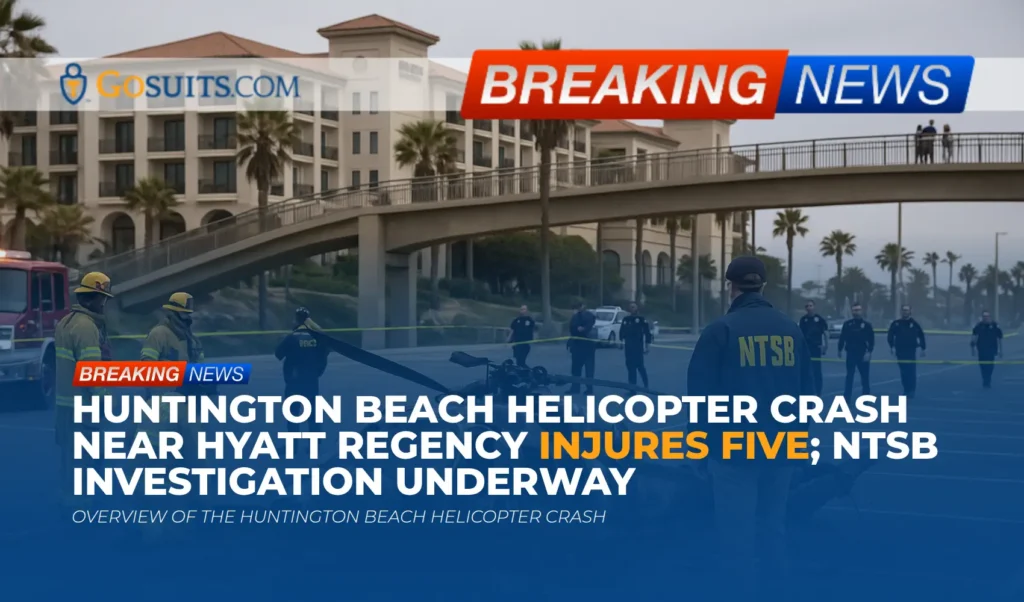- What happened in Oswego, Illinois
- Vehicle-into-building crashes and storefront safety
- New bollards at the site and recognized safety guidance
- Illinois civil liability considerations
- Evidence that often matters and how to preserve it
- Where to obtain official records and who to contact
- Insurance issues after a car-into-building crash
- Time limits in Illinois
- Compassionate support resources
- Time-sensitive next steps to protect rights
- Commentary from Gosuits Oswego, Illinois Personal Injury Attorney
What happened in Oswego, Illinois
News reports indicate that a vehicle crashed through the front entrance of a Portillo’s restaurant in Oswego, Illinois during the summer, causing the death of a 2-year-old child and injuring several others. Law enforcement publicly stated the incident appeared to be an accident. In response, the restaurant has now installed new protective bollards at the front of the building to help prevent a similar tragedy.
While investigators described the event as accidental, the civil law questions that follow can be complex. When a vehicle enters a space intended for diners and families, the issues often include driver behavior, site design, traffic flow near the entrance, and what protective measures were in place or reasonably feasible. This article explains those issues in plain language and points to official resources for families and community members seeking information.
Vehicle-into-building crashes and storefront safety
A car-into-building event is sometimes referred to as a storefront crash. These incidents can happen at restaurants, retail stores, and medical or community facilities, and they may involve drivers who are distracted, confused about pedals, ill, or otherwise unable to control the vehicle. The consequences are often severe because patrons and workers inside are unprotected from the force of a moving vehicle.
National safety agencies recognize the risk of vehicle intrusions into occupied spaces. The Department of Homeland Security’s infrastructure security materials discuss vehicle ramming hazards and outline ways that facilities can reduce the likelihood and impact of a vehicle entering pedestrian areas, including through the use of barriers and thoughtful site layout. For general security and safety planning around vehicle intrusions, see the Department of Homeland Security’s guidance on vehicle ramming risk mitigation at cisa.gov.
While national crash data typically focuses on roadway collisions, run-off-road events and off-roadway pedestrian risks are well documented in broader safety literature. The National Highway Traffic Safety Administration publishes annual Traffic Safety Facts; these reports underscore the severity of pedestrian and vulnerable user injuries nationwide and the importance of site-level protections where people gather. For context on national crash and pedestrian safety trends, see NHTSA’s Traffic Safety Facts at nhtsa.gov.
New bollards at the site and recognized safety guidance
Bollards are short, sturdy vertical posts installed in front of entrances, walkways, and outdoor seating areas to block or slow vehicles. Properly designed and installed, they can help prevent a car from reaching people inside a building or on a sidewalk. The placement, spacing, and foundation of bollards matter; they are most effective when they create a continuous protective line while still allowing pedestrian access and accessibility.
Public guidance materials discuss barriers as one of several protective measures for places where people congregate near vehicle traffic. For example:
- Department of Homeland Security, Cybersecurity and Infrastructure Security Agency (CISA): Provides open-source materials describing the role of physical barriers in mitigating vehicle-ramming risks and improving security in crowded places. See CISA’s vehicle ramming resources at cisa.gov.
- Federal Emergency Management Agency (FEMA): Addresses site and urban design approaches for safer public spaces, including the integration of protective barriers within the built environment. See FEMA’s site and urban design publications at fema.gov.
These materials are not building codes, but they reflect recognized approaches for reducing harm in locations where pedestrians and vehicles interface. After a tragic event, adding barriers at storefronts is a visible safety step that aligns with these broader risk-reduction concepts.
Illinois civil liability considerations
Every incident is unique, and liability usually depends on careful fact-finding. In an Illinois vehicle-into-building case, several theories may be evaluated:
- Driver negligence: If a driver failed to use reasonable care behind the wheel, civil liability may arise. This can include distracted driving, pedal error, excessive speed in a parking area, or failing to maintain control of the vehicle. Evidence such as event data recorders, surveillance footage, eyewitness accounts, and medical records may be relevant.
- Premises liability and site design: Property owners and occupiers generally have a duty to maintain reasonably safe conditions for patrons. Questions may include whether the layout directed traffic toward doors or dining areas, whether protective devices were reasonable based on past incidents or foreseeable risks, and whether signage, speed control, or barriers were considered.
- Third-party maintenance or construction: In some situations, responsibility may include entities involved in design, construction, or maintenance of the entrance, parking lot, curb cuts, or traffic controls. The specific duties and contracts matter.
Illinois follows a modified comparative fault system for most negligence cases. Under 735 ILCS 5/2-1116, a plaintiff’s recovery can be reduced by their proportion of fault, and recovery is barred if the plaintiff’s fault exceeds 50 percent. The statute can be reviewed at the Illinois General Assembly site: ilga.gov.
For fatal incidents, two types of civil claims are often discussed in Illinois:
- Wrongful death: Brought for the benefit of surviving next of kin to address losses they suffer from the death. See the Illinois Wrongful Death Act, 740 ILCS 180, at ilga.gov.
- Survival action: Brought on behalf of the decedent’s estate for claims the decedent could have pursued if they had lived. See the Illinois Survival Act, 755 ILCS 5/27-6, at ilga.gov.
It is important to stress that police describing an incident as an accident does not automatically resolve civil liability. Civil analysis asks whether any person or entity failed to use reasonable care under the circumstances and whether that failure caused harm. The answers depend on evidence.
Evidence that often matters and how to preserve it
Timely steps can make a significant difference in understanding how and why an incident occurred. Families and representatives often work with counsel to gather:
- Police reports and scene documentation: Narrative reports, diagrams, and photos, including any supplemental materials or updates if reconstruction is conducted later.
- Surveillance video: Cameras at the business, nearby stores, traffic intersections, or residences may have captured the event and vehicle movements before impact.
- Vehicle data: Many vehicles contain event data recorders that can show speed, braking, throttle position, and airbag deployment information in the seconds before impact.
- Witness statements: People sometimes move on quickly. Early outreach can help preserve independent recollections and contact information.
- Site measurements and conditions: Photographs, measurements, and notes about curb heights, wheel stops, parking angles, visibility, signage, and traffic flow.
- Medical and coroner records: Documentation of injuries, cause and manner of death, and any toxicology that may exist, accessed by authorized next of kin or the legal representative of the estate.
A common tool used by representatives is a written preservation request to any business or entity believed to have relevant evidence, sometimes called a spoliation letter. The goal is to put the holder of evidence on notice to retain video, data, maintenance logs, and other materials that might otherwise be automatically deleted.
Where to obtain official records and who to contact
The following sources are often relevant in an Illinois incident like this. Availability can depend on the status of any investigation and on confidentiality laws.
Police crash reports and investigative materials
If the incident occurred within the Village of Oswego, the initial report was likely handled by the local police department. The records division is the place to request copies. When a state agency is involved, the Illinois State Police maintain a crash report portal for reports within their jurisdiction. See the Illinois State Police crash report page at isp.illinois.gov.
Some materials can be requested under the Illinois Freedom of Information Act, 5 ILCS 140, though certain records may be exempt while an investigation is pending or to protect personal privacy. The FOIA statute is available at ilga.gov. When requesting records, be as specific as possible about date, time, location, and the types of records sought.
Coroner and autopsy records
Kendall County maintains coroner records for deaths within the county. Next of kin or a court-appointed representative of the estate may request autopsy reports, coroner’s determinations, and, when available, toxicology results in accordance with Illinois law. For contact information and procedures, visit Kendall County’s official site at kendallcountyil.gov and navigate to the Coroner’s Office.

Death certificates
In Illinois, certified death records are maintained by the Illinois Department of Public Health and by local county clerks. Eligibility and identification are required. Guidance on ordering death certificates is available at dph.illinois.gov.
IDOT crash data and safety information
For broader context about crashes in Illinois, the Illinois Department of Transportation publishes statewide crash facts and provides access to crash data tools. See IDOT’s roadway crash data resources at idot.illinois.gov.
Municipal building and permitting records
Local building departments may maintain records concerning site plans, permits, or subsequent safety improvements such as installing bollards. Availability and procedures vary, and some records may require a written request. Check the Village of Oswego’s official channels for instructions on requesting public records pursuant to Illinois FOIA, 5 ILCS 140, noted above.
Insurance issues after a car-into-building crash
Multiple insurance policies can be implicated when a vehicle strikes a business:
- Driver’s auto liability: The policy covering the vehicle or the driver typically responds to claims alleging the driver’s negligence.
- Business liability: A commercial general liability policy may be relevant to claims alleging unsafe conditions, inadequate protection, or negligent maintenance of the premises.
- Umbrella or excess coverage: Additional layers of coverage may exist for individuals and businesses.
- First-party coverages: Medical payments coverage or other first-party benefits can apply in certain situations, separate from fault determinations.
Insurance companies frequently request recorded statements and medical authorizations early. It is prudent to consult a personal injury attorney before any discussion with insurers. Statements made to an adjuster can be used later and may affect how fault and damages are evaluated. A no-cost consultation can help clarify rights, the sequence of contact, and what documentation to gather before engaging with insurers.
Time limits in Illinois
Illinois law imposes deadlines for civil claims, and missing a deadline can affect the ability to pursue a case:
- Personal injury: Generally two years from the date of injury under 735 ILCS 5/13-202. See the statute at ilga.gov.
- Wrongful death: Often two years from the date of death under the Illinois Wrongful Death Act, 740 ILCS 180. See ilga.gov.
- Claims against certain public entities: Actions against a local public entity or employee generally must be commenced within one year under 745 ILCS 10/8-101. See ilga.gov.
Some deadlines have exceptions, and special rules can apply to minors or estates. The correct deadline depends on the parties involved and the exact legal claims asserted. Because of these nuances, time-sensitive legal advice for the specific situation is important.
Compassionate support resources
Grief and trauma support are as important as legal and administrative steps. Free and confidential crisis counseling is available nationwide by dialing 988, the Suicide and Crisis Lifeline. Information for individuals and families coping with trauma is available through the Substance Abuse and Mental Health Services Administration at samhsa.gov.
For families navigating practical tasks after a death, the Illinois Department of Public Health page on death records offers guidance on obtaining certified copies for necessary notifications and benefits. See dph.illinois.gov.

Time-sensitive next steps to protect rights
The following actions are time-sensitive and can strengthen a future claim or help clarify what happened:
- Secure key records quickly: Request police incident reports, 911 audio if available, and coroner records through the appropriate official channels. Early requests help prevent delays and keep review on track.
- Preserve video and data: Ask nearby businesses and property managers to preserve surveillance footage. Some systems auto-delete within days. Written preservation requests can help ensure data is not lost.
- Document the scene: Photograph entrances, parking spaces, curbs, signage, and any new safety measures added after the incident. Note dates and times for those observations.
- Collect witness information: Identify and record contact information for anyone who saw the vehicle’s movements or the site conditions before impact.
- Organize medical and expense records: Keep bills, receipts, and records related to medical care, counseling, travel for treatment, and time away from work.
- Be cautious with insurers: Do not provide recorded statements or broad medical authorizations to any insurer before first consulting with a qualified attorney in your area. What is said early can be used later and may affect the evaluation of fault and damages.
- Mind the deadlines: Calendar potential limitation periods so that investigation and decision-making can occur without last-minute pressure.
Acting promptly improves the chance of preserving crucial evidence and reduces the risk of missing a deadline that could limit available options.
Commentary from Gosuits Oswego, Illinois Personal Injury Attorney
Our hearts go out to the family and everyone affected by the loss and injuries from this tragic crash. Families go to restaurants to share a meal, not to face life-changing harm. This article is intended for educational purposes and general information to help neighbors understand the civil issues that often arise after a vehicle-into-building event.
Based on the public reports, the addition of bollards at the Oswego restaurant is a meaningful safety step. Physical barriers are one of several recognized ways to protect people where vehicles and pedestrians share space. In our work on injury matters, we regularly see how design choices at entrances and parking areas can influence risk, and how a combination of layout, signage, speed control, and barriers can reduce the chance of a severe outcome.
After a traumatic event, insurance companies and large corporations often move quickly to shape the narrative and collect information. Adjusters may ask for recorded statements or broad medical authorizations while families are still processing what happened. Those early conversations can affect fault determinations and claim value. Without a full picture of the evidence, it is easy for victims to feel pressured into decisions that are not in their best interest.
A free consultation with a seasoned personal injury attorney can help clarify rights, identify evidence that needs to be preserved, and outline a practical plan before any insurer conversations occur. It also offers a confidential space to ask questions about timelines, applicable laws, and the responsibilities of each party involved.
References and resources:
- Department of Homeland Security, CISA: Vehicle Ramming Risk Mitigation
- FEMA Building Science and site design resources
- NHTSA Traffic Safety Facts and crash data systems
- Illinois Department of Transportation crash data
- Illinois State Police crash reports portal
- Kendall County Coroner information
- Illinois Department of Public Health death records
- Illinois Wrongful Death Act, 740 ILCS 180
- Illinois Survival Act, 755 ILCS 5/27-6
- Illinois statute of limitations for personal injury, 735 ILCS 5/13-202
- Local Governmental and Governmental Employees Tort Immunity Act deadline, 745 ILCS 10/8-101
- Comparative fault statute, 735 ILCS 5/2-1116
- Illinois Freedom of Information Act, 5 ILCS 140
- SAMHSA disaster and distress helpline resources






